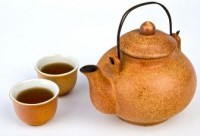Artful Leadership
This is the fifth in a series of articles based on the Six Ways of Ruling, a teaching that was first presented by the founder of Shambhala, Chögyam Trungpa Rinpoche, in 1978 and further expounded upon by his son, Sakyong Mipham Rinpoche, in his book Ruling Your World (Chapters 22-23). The “Six Ways” are qualities of a leader who wishes to join heaven and earth; that is, to execute power inspired by wisdom. The six qualities are: benevolent, true, genuine, fearless, artful, and rejoicing. This article is based on a talk given on March 21, 2013 at the Washington, DC Shambhala Center.
An artful leader is one who acts with great dignity. It may appear that he or she does very little, yet much is accomplished and there is a resounding sense of well-being and joy at the outcome. We all may have encountered leaders like this, and we’re often left asking ourselves, “What makes them so skillful and successful?”
Consideration of others
At the root of being an artful, or skillful, leader is consideration of others—that is, always helping them to develop confidence and leadership skills of their own. This entails, first and foremost, holding the virtues of the first three Ways of Ruling—being benevolent, true, and genuine—by which we demonstrate an ability to listen to and empathize with others and the current situation. At times this will also mean embracing opposing views and holding one’s seat in the face of seeming opposition. This requires space. The leader who can allow space for opposing views to be heard displays great dignity because he demonstrates trust in that space, respect for others, and fidelity to the principle of basic goodness.
Opening up situations with wisdom rather than closing them down with negativity
Both artful and mundane leaders often feel (and sometimes are dead certain) that they know exactly what is the best course of action to take. With experience comes knowledge and with leadership comes perspective. It is often the case, however, that leaders, while they feel they know best how something should be done, need to delegate responsibilities to others in order to focus on other aspects of the business or organization that they lead. In such situations, the difference between artful and common leaders is that artful leaders know that if they impose a strategy or solution on a group, or if they shoot down every idea offered by others before it can even be entertained, they close down the situation with negativity. Such leaders may win in the short-run, but they have done little to develop leadership in others. On the other hand, artful leaders know that giving space for debate, asking questions to draw people and ideas out, rather than forcing our opinions on them, allows everyone to develop discernment and discipline. Asking “What if…” questions rather than declaring “This is what we are going to do” creates an environment in which everyone is respected and people can be guided to wise and appropriate conclusions. In this mode of operation, the leaders’ questions are often as important as the answers they give. Skillful leaders open up the situation and thereby gently guide the group to a place where all can move ahead. How a leader does this—with respect, openness, inquisitiveness, and gentleness—often means more in the end than where the team finally arrives.
A simple cup of tea
 The symbol most often used in Shambhala to represent the quality of artful is a teacup. If you think of a Japanese tea ceremony, you can understand why this symbol is used. The grace, precision, and care that goes into making and offer a simple cup of tea in such a ceremony displays the deep respect that the host has for the guest and the relationship. The artfulness of how the tea is prepared and offered does more to deepen the relationship between the participants than however the tea might taste and perhaps more than any subsequent conversation that might ensue.
The symbol most often used in Shambhala to represent the quality of artful is a teacup. If you think of a Japanese tea ceremony, you can understand why this symbol is used. The grace, precision, and care that goes into making and offer a simple cup of tea in such a ceremony displays the deep respect that the host has for the guest and the relationship. The artfulness of how the tea is prepared and offered does more to deepen the relationship between the participants than however the tea might taste and perhaps more than any subsequent conversation that might ensue.
Offering to others space, empathy, curiosity, and the resulting gift of the development of wisdom, like offering a cup of tea, can make the difference between being a run-of-the-mill leader and an artful one.
*******
by Chris Montone, based on a corresponding talk on this topic given at the DC Shambhala Center on March 21, 2013.
Photo credit: Image courtesy of dshutterman
